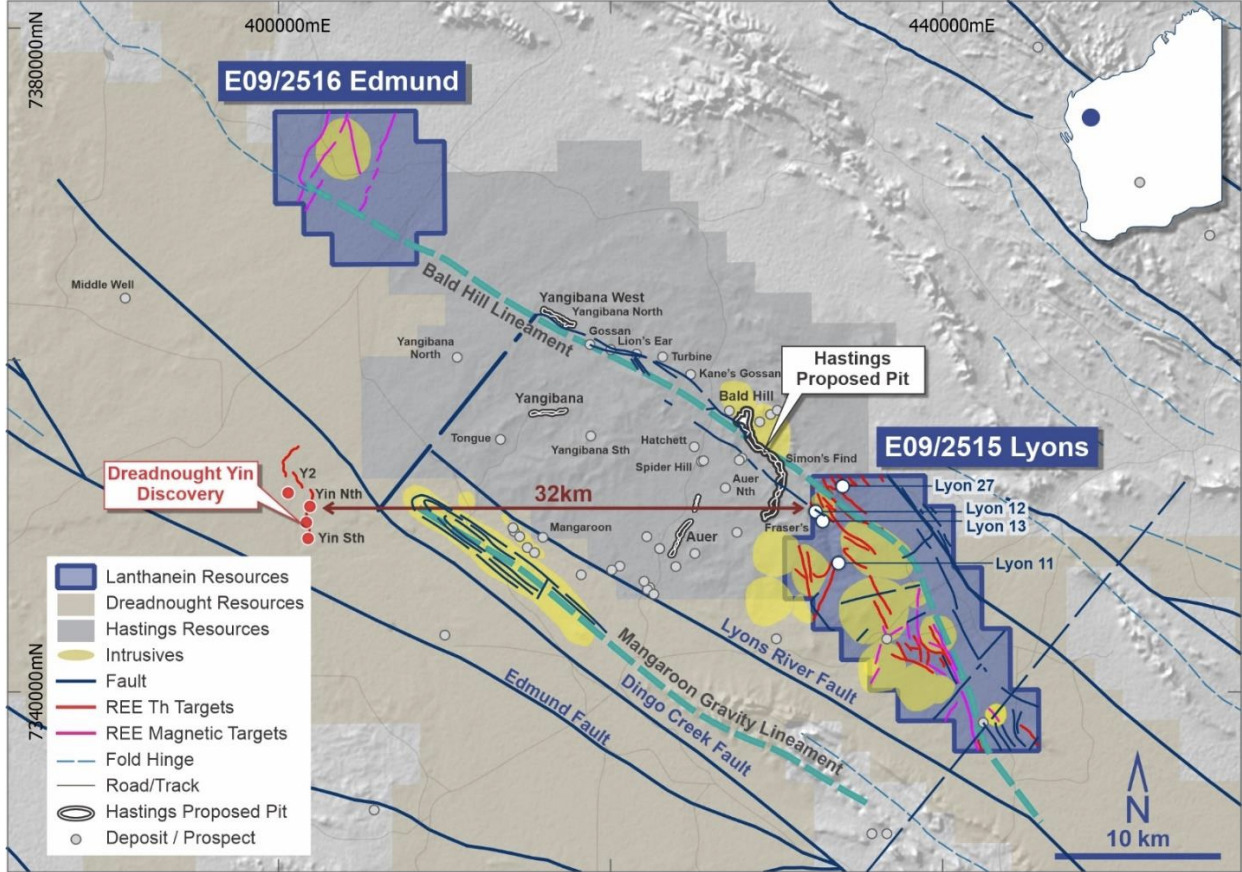Lanthanien Resources: the rare earths junior with big potential

Lanthanein Resources not only sits within a new, emerging REE province – the ~$50m market cap has seen its share price more than double since July. Pic via Getty Images
It’s harsh, vast country out in WA’s Gascoyne region but key ASX players are proving the widely underexplored district could become a game changing rare earths province.
Home to the likes of Hasting Technology Metals (ASX:HAS), Dreadnought Resources (ASX:DRE), Kingfisher Mining (ASX:KFM) and newly listed Voltaic Strategic Resources (ASX:VSR), WA’s Gascoyne region more than 1,000kms from Perth has been the birthplace of major discoveries in recent times.
In 2017, Hastings reported one of the richest concentrations in the world of neodymium and praseodymium (NdPr) at the Yangibana Project, comprising a resource of 21 Mt at NdPr TREO ratios of 41%.
It is now poised to become Australia’s next rare earths producer once the project comes online in 2024.
Back in July this year, shares in advanced explorer, Dreadnought, went flying after thick intersections of up to 35m at 2.75% TREO from 94m confirmed the Yin ironstone within its Mangaroon project as a high-grade rare earths discovery.
The $425m market cap company has more drilling programs planned and is confident Yin will produce a substantial initial JORC resource by the end of 2022.
The right location in a rare earths hot spot
Why does all this matter?
Mining minnow Lanthanein Resources (ASX:LNR), previously Frontier Resources, is a mere 2km’s from Hasting’s Yangibana and only 15km’s from Dreadnought’s fence line.
Like Yangibana and Yin, the source of rare earths at LNR’s Lyon and Edmund project areas are from Gifford Creek Ferrocarbonatities, which have been intruded along the Bald Hill Lineament.

In an interview with Stockhead, Lanthanein’s technical director Brian Thomas says the Gifford Creek Carbonatite Complex is the focus of its maiden RC drilling program, currently underway, with the Bald Hill Lineament representing a very high priority target.
‘Better than your average’ nearology with drilling underway
Former geologist and experienced stockbroker Guy Le Page believes LNR’s Lyons and Edmund tenements are ‘better-than-average’ nearology plays with prospects on the tenements characterised by outcropping ironstones of >2.5km strike length.
A field sampling program uncovered stunning results from rock chips across multiple targets at Lyons earlier this year, with results showing up to 8% total rare earth oxides (TREO) as well as phosphate mineral monazite – further supporting comparison to Yangibana and Dreadnought ironstones.
According to Thomas, these rock chip targets will also be tested in the upcoming drill program.
“Our goal is to have some pretty good results in the next few weeks, we are just hoping now that when we put the drill rig through these ironstones that we come up with the same sort of numbers that Hastings have done with their resource and what Dreadnought have done with their exploration success,” he says.
Lyons forms part of Lanthanein’s broader Gascoyne rare earths project with the company’s Edmund project about 25km to the northwest.
Interestingly, Thomas explains at one point in time Hasting’s owned what is now LNR’s Lyons Project back when rare earths weren’t very fashionable.
Before that, much of the exploration work carried out by prospectors in the 1970’s focused on base metals gossans, due in part to shallow alluvial cover which led to the area being overlooked.
With the Lyons Project perfectly nested between two key rare earth players in what could be a new Australian mineral province and within a broader market set to boil over, there’s no doubt investors will be keenly watching to see what is uncovered during RC drilling.
Murraydium REE Project – South Australia
While the Gascoyne rare earths project remains the company’s flagship asset, LNR acquired Murraydium REE Project in South Australia in August 2021 –.
Covering 873sqkm across four tenement blocks within the Murray Basin, the project is adjacent to Australian Rare Earth’s (ASX:AR3) Koppamurra REE prospect which boasts a JORC inferred resource of 39.9Mt at 725ppm TREO.
In June, South Australia’s Department for Energy and Mining granted the approval for 307 aircore holes to be drilled on roadside verges in the exploration area to investigate for the presence of shallow clay hosted REE mineralisation.
Ionic adsorption clay (IAC) deposits are relatively rare outside of China but are commonly considered to be some of the cheapest and most readily accessible sources of heavy rare earths.
Drilling is set to kick off in quarter four.
Mt Clere – Gascoyne
Lanthanein’s third rare earth project is the Mt Clere Project, also in the Gascoyne province.
Mt Clere comprises one exploration licence application E52/4012 on the major Ti Tree Shear Zone, which may be analogous to the relationship between the Lyons River Fault and the Gifford Creek Carbonatite Complex.
A review of historical data identified multiple targets within the Durlacher Supersuite lithology, which hosts Hastings’ Yangibana mineral resource as well as Dreadnought’s Yin deposit.
An extensive gridded auger sampling program is planned across the broader project area to cover the remainder of the Dularcher Supersuite intrusives with the Program of work Application submitted to DMIRS for an RC drilling program.
Lithium potential in LCT pegmatites has been identified in the southeast of the tenement and LNR hopes to begin a field reconnaissance program as soon as possible to identify and validate the potential of rare earth elements and lithium mineralisation.
Follow on exploration will depend on the results of this initial work program but are expected to include a detailed and systematic exploration program consisting of a combination of soil geochemical sampling, rock sampling and geophysical surveys across the high priority target areas, prior to drilling programs being undertaken.
###
This article was developed in collaboration with Lanthanein Resources (ASX:LNR), a Stockhead advertiser at the time of publishing.
This article does not constitute financial product advice. You should consider obtaining independent advice before making any financial decisions.
Related Topics

UNLOCK INSIGHTS
Discover the untold stories of emerging ASX stocks.
Daily news and expert analysis, it's free to subscribe.
By proceeding, you confirm you understand that we handle personal information in accordance with our Privacy Policy.








